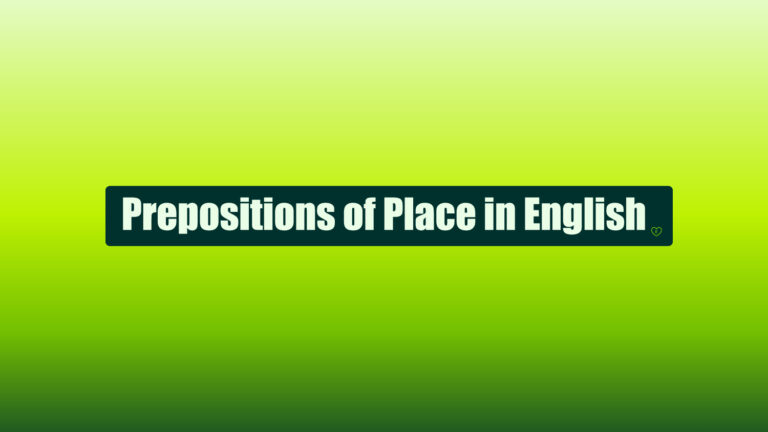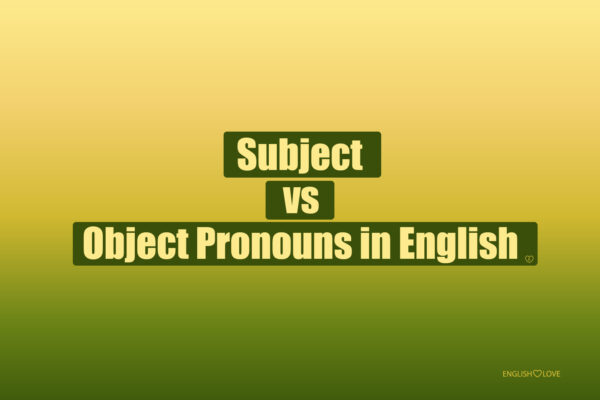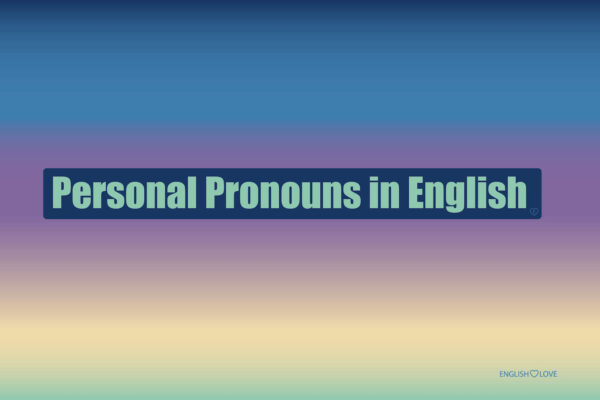Embarking on the journey to master English grammar can be both exciting and challenging, especially when it comes to understanding the nuances of prepositions of place. These small yet significant words hold the power to convey precise locations and positions, adding depth and clarity to our sentences. In this comprehensive guide, we will delve into the world of prepositions of place, exploring their meanings, usage, and the common mistakes to avoid. Whether you are a language enthusiast, an English learner, or simply curious, this guide is designed to help you navigate the intricacies of using prepositions of place in English effectively. So, let’s begin our exploration and enhance our linguistic skills together!
What is a Preposition of Place?
A preposition of place is a word that helps pinpoint the position or location of an object or subject in a sentence. It provides context about where something is in relation to another item. Common prepositions of place in English include terms such as ‘on,’ ‘in,’ ‘at,’ ‘under,’ ‘below,’ ‘above,’ ‘beside,’ and ‘near.’
Examples of Prepositions of Place in Sentences
- The book is on the table.
- My phone is in my pocket.
- The cat is under the bed.
- The bird is above the tree.
- The car is beside the house.
- The store is near the park.
| Preposition | Examples |
|---|---|
| at | at the corner |
| at the bus stop | |
| at the end of the road | |
| in | in a box |
| in the room | |
| in the garden | |
| on | on the table |
| on the shelf | |
| on the roof |
Using Place Prepositions in Grammar
Prepositions of place play a pivotal role in grammar, offering clarity to sentences by describing the location or position of one object in relation to another. Here’s how to use them:
- Use “in” for something inside an enclosed space: “The cat is in the box.”
- Use “on” when something is in contact with a surface: “The book is on the table.”
- Use “under” for something below another object: “The cat is under the bed.”
- Use “above” when something is higher than another object: “The bird is above the tree.”
- Use “beside” for something next to another object: “The car is beside the house.”
- Use “near” when something is close to another object: “The store is near the park.”
| Preposition | Rule | Correct Example | Incorrect Example |
|---|---|---|---|
| in | Used for something inside an enclosed space. | The cat is in the box. | The cat is on the box. |
| on | Used when something is in contact with a surface. | The book is on the table. | The book is in the table. |
| under | Used for something below or beneath another object. | The cat is under the bed. | The cat is on the bed. |
| above | Used when something is higher than another object. | The bird is above the tree. | The bird is in the tree. |
| beside | Used for something next to or beside another object. | The car is beside the house. | The car is on the house. |
| near | Used when something is close to another object. | The store is near the park. | The store is in the park. |
List of Prepositions of Place
- on
- in
- at
- under
- below
- above
- over
- beside
- next to
- near
- by
- between
- among
- inside
- outside
- behind
- in front of
- across from
- opposite
- beyond
Prepositions of Place in Phrases
Prepositions of place can also form part of phrases to further describe the location or position of something:
- “On top of the mountain”
- “In the middle of the room”
- “At the corner of the street”
- “Underneath the bridge”
- “Beside the riverbank”
- “Near the beach”
Common Mistakes to Avoid
- Misusing Prepositions:
- Tip: Always consider the context and relationship between objects when choosing a preposition.
- Correct: The keys are in the drawer.
- Incorrect: The keys are on the drawer.
- Omitting a Preposition:
- Tip: Remember that prepositions are essential for clarifying relationships. If a sentence feels incomplete, you might have missed a preposition.
- Correct: The book is on the table.
- Incorrect: The book is table.
- Incorrect Word Order:
- Tip: The object of the preposition (like ‘table’ in “on the table”) usually comes after the preposition.
- Correct: The cat is under the table.
- Incorrect: The table is under the cat.
- Overusing a Particular Preposition:
- Tip: Avoid relying too heavily on one preposition. Diversify your usage based on the situation.
- Correct: The painting is on the wall.
- Incorrect (Overused): The painting is in the wall.
- Confusing Prepositions of Time and Place:
- Tip: Some prepositions can indicate both time and place. Ensure you’re using them appropriately based on the context.
- Correct (Place): The store is at the corner.
- Correct (Time): Meet me at 5 o’clock.
- Incorrect: Meet me in 5 o’clock.
- Using Unnecessary Prepositions:
- Tip: Sometimes, less is more. Avoid adding prepositions when they aren’t needed.
- Correct: She went inside.
- Incorrect: She went inside in the house.
By being aware of these common pitfalls and practicing regularly, you can enhance your proficiency in using prepositions of place in English.
In Conclusion
Prepositions of place, such as ‘on,’ ‘in,’ ‘at,’ and ‘under,’ are crucial in English grammar. They provide clarity about the position of objects in relation to others. By understanding and practicing them, you can enhance your English language skills and communicate more effectively.
FAQ about Prepositions of Place in English
What are the primary functions of prepositions of place?
Prepositions of place primarily help in indicating the position or location of one thing in relation to another. They provide spatial context in sentences, making it clear where an object or person is situated.
Can the same word serve as both a preposition of place and time?
Yes, some prepositions can indicate both place and time. For instance, “in” can refer to being inside a room (place) or within a month (time). However, the context of the sentence usually makes the intended meaning clear.
How do I know which preposition of place to use in a sentence?
The choice of preposition often depends on the specific relationship you want to convey between objects. For example, if you want to express something touching a surface, “on” is appropriate. If you’re indicating something inside an enclosed space, “in” is the right choice. Practice and familiarity with various contexts will help you choose the correct preposition.
Are there any tricks to remember the correct usage of prepositions of place?
One helpful trick is to visualize the spatial relationship you want to describe. For instance, if you think of an object being surrounded by walls or boundaries, “in” might be the preposition you need. Associating prepositions with specific images or scenarios can aid in recalling their correct usage.




